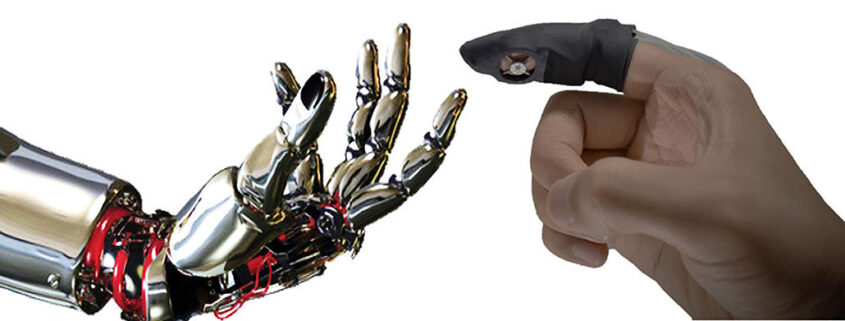Its inventors see a variety of potential uses. “A surgeon can wear our gloves and touch a patient far away,” says Thanh Nho Do, an engineer at the University of New South Wales in Australia who led design of the new skin stretch device, or SSD. “In the deep sea or in space, a robot can pick up things. This can let you feel what the robot touches. When a person has an artificial limb, they can wear this and feel what it touches.”
Scientists have been working on haptic devices for years, but touch is a delicate sense. It’s unlike vision, which can be communicated over distances with cameras and monitors. It’s also unlike hearing, where sounds can be relayed to the ears with microphones and speakers.
In recent years, scientists have been finding new ways to build and improve haptic devices. Some have used vibration. Others use motors to physically push on a user’s skin. These, however, often require bulky and uncomfortable parts, notes Do. In fact, he observes, “Most of them have a big motor, and when it moves on the skin it’s not comfortable.”
His group took a new approach. They realized that the brain gets haptic information when something moves across the skin. With that idea in mind, they wanted to design something that could slide and stretch.
Their SSD is made from a piece of fabric into which tiny, fluid-filled tubes have been sewn. Those tubes all connect to a small disk, called a tactor. That tactor has a tiny motor that allows it to move short distances within a small area. In fact, it can move in all three dimensions. The moving tactor tugs on the tiny tubes. As the tubes expand and contract, they stretch the fabric across someone’s skin. In this way, they act like artificial muscles.
“The fabric is what makes the magic of this,” says engineer Nadja Bressan. “As it stretches and contracts, it pulls and produces sensing. The stretch is where everything happens.” Bressan says she admires the innovative concepts that underlie the new design. However, she cautions, with extended use the device may wear down. The designers will have to find a way to make their SSD both functional and durable, she says.
Do says he was inspired to work on the SSD after spending many years working on surgical robots. One day, a doctor asked him: “When will I put on a glove and feel what the robot feels?” Do kept that question in mind as he spent years learning about the sense of touch and haptic technology.
His group first developed the tubes that simulate muscles about three years ago. Since then, they’ve been testing different ideas about how to use those tubes in SSDs. They had their first test model about a year ago. Its tactor was about 10 millimeters across, which Do thought was still too bulky. His team’s latest SSD has a tactor only 5 mm across with even smaller ones in the works.
The next challenge for the team is to figure out how to add the ability to feel hot and cold. “Then you can not only feel the force, but also the temperature,” Do says. “If you wanted to touch ice in space, you could.”
Source: Science News

